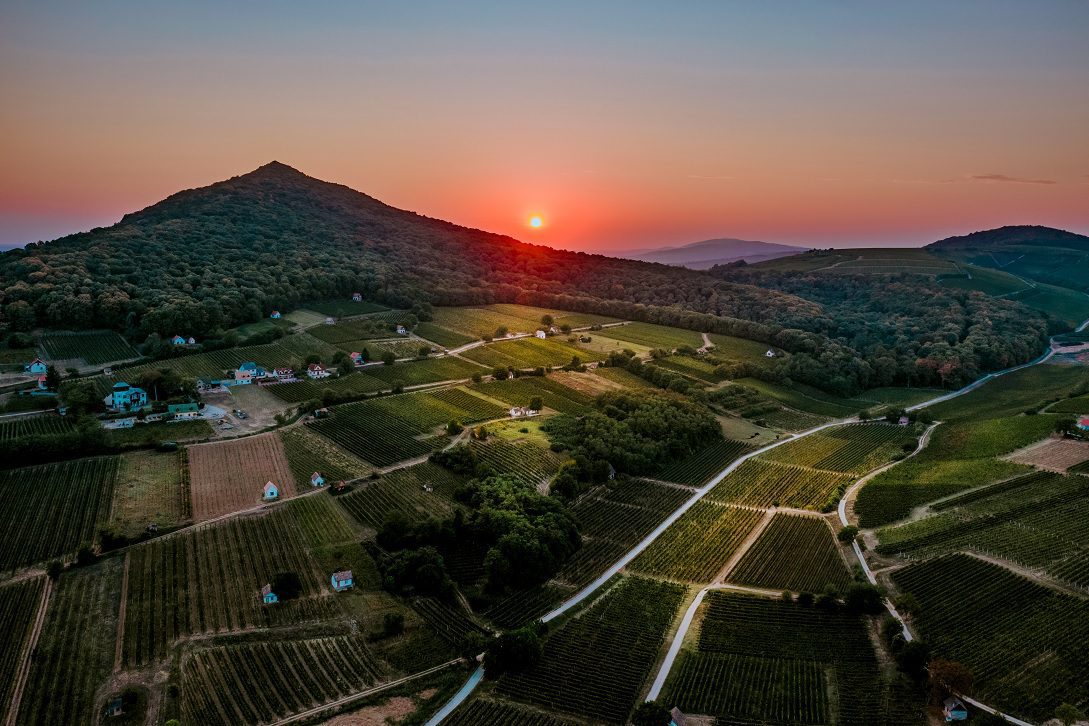New products
Showing 1–30 of 68 results
Showing 1–30 of 68 results

Rich, full-bodied, tannic red wines combined with the delicacies of everyday life. This is Villány. Viticulture here, like Transdanubia, dates back to Roman times. During the 19th century, the reputation of Villány’s wines grew and also became a significant export commodity.Since then, French varieties that yield higher quality wine have gained ground. Villány used to be part of the Villány-Pécs wine region. It has been granted independent wine district status since the late 1940s.It is located in the south of Hungary, along its southern border, on the south-eastern slopes of the Mecsek Hills and the southern and eastern slopes of the Villány Hills.Currently, there are 402 hectares of white varieties and 1,482 hectares of black varieties planted.The Villány Hills consist of five huge plates thrust up on top of one another. Their core is mainly made up of carbonate rocks deposited in the seas of the Mesozoic, including compact, hard Middle Triassic dolomite and limestone. There are no vines directly on the old limestone and dolomite. The vineyards are all located where there is also a few-metres-thick surface layer of loam, loam-loess or brown forest soil. In places where the loess topsoil thins out, the vine’s roots can penetrate deep into the calcium-rich subsoil mixed with carbonate rock debris. The thin loess soil cover directly above the limestone outcrops is mixed with dolomite and limestone debris. This yields wines with greater acidity, while pure loess soil produces softer wines. In addition to loess-loam soils, red clay can be found at the bottom of the slopes, while brown forest soil occurs on higher slopes, along with rarer rendzina soil. Villány is characterised by sub-Mediterranean microclimate and is the earliest region in Hungary to warm up in the spring. The proportion of white and red wine varieties are almost the same in the region; however, it differs between the subdistricts, with white varieties dominating in Siklós and black in Villány. However, most believe red wine to be king. The red wines of Villány were popularised by the softness of Portugieser, which produces pleasantly fruity, approachable, easy-drinking wines, that are generally drunk in the year following the harvest. There is also now another good everyday drinking wine, a Portugieser-based blend called RedY. It is a light, fresh, fruity wine that has not necessarily been oak-aged. Wines from varieties that are generally harvested with much higher acidity and tannins, often from low-yielding vines, thus with greater concentration, need long ageing in oak. They often only start to show their true potential after two or three years. Wines based on Cabernet Sauvignon are generally aged for longer than average in barrique and repay the consumer’s patience. These are full-bodied wines, and good vintages can be enjoyed for up to 15 to 20 years. The wine district’s flagship variety is Cabernet Franc. Besides Villány, monovarietal wines from the variety are generally only produced in its region of origin, the Loire Valley. It may only bear the trademark of Villányi Franc, the wine district’s flagship wine, after sensory evaluation by a panel of producers.